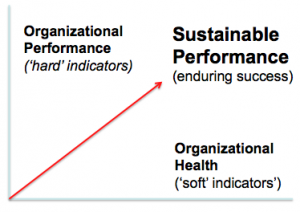What you seek is seeking you.
– Jalaluddin Rumi
I humbly borrow the above quote from the evocative spiritual poet of the thirteenth century, Sufi mystic Jalaluddin Rumi, to share with you how Appreciative Inquiry has influenced me both professionally and personally.
I envision a world where learning and education is not only the birthright of an individual, but the essence of a being. I am a progressive design thinker, author and research scholar in the areas of learning and education, organisational learning and AI. I also take deep interest in philosophy and spirituality to generate clarity of thought and develop a multifaceted view on matters related to my work and everyday living.
As a progressive design thinker, I facilitate the process of creating environments where learning happens. Using generative questions premised on AI, I attempt to discover what works best for a system, either by identifying from the past or by imagining what is desired. To me every institution is a small-scale democracy where the environment for learning can be designed by the people, for the people and of the people for a just society, with learning central to the existence of a being.
I appreciate classical and contemporary instrumental music to stay connected with art, and prefer reading nonfiction to learn different views on various subjects. Travel enhances my exposure and simultaneously generates confidence and teaches me to accommodate differences. Popo, my dog, is a steady source of perseverance, discipline, honesty, joy and compassion that drives me to stay focused and happy. I like to be in solitude: for me it is an expression of quiet and happiness-with-self, a point where I am in deep connection, my being integrated with active thinking, where all distractions stand still, and where I can restore and start afresh. Work, Worship and Workout are the cornerstones of my everyday living.
Premised on AI, I aspire to use design thinking from ideation to fruition in institutions involved in constructing and executing policies in learning and education for a variety of stakeholders. I explore the possibilities for learning within a given context with recipients, and then align the potential available with the educators, generating a environment conducive to the needs of the learner. The focus on discovering possibilities with collaborators gives birth to common ideas, establishing a paradigm for collective working. Both on a professional and personal front, the focus is to remain generative and to create what works best for people – including myself. I look forward to doing good work that is mutually beneficial, attempts excellence, and is gratifying to all associated with the work at hand.
This brings the narration full circle. To remain conscious and keep searching for my purpose guided me to AI. To look for possibilities in every situation and work with those possibilities for an imagined future laid the bedrock of my present career. Without obstructing ideas that come to me, I consciously encourage idea generation, get into imagination and then think about how what I imagined can be manifested, given the present set of possibilities. AI is not a tool – it is an approach that has the potential to drive individual behaviour and transform character. Through the appreciative lens every individual can affirm the self.
I belong to the place I believe I belong.




